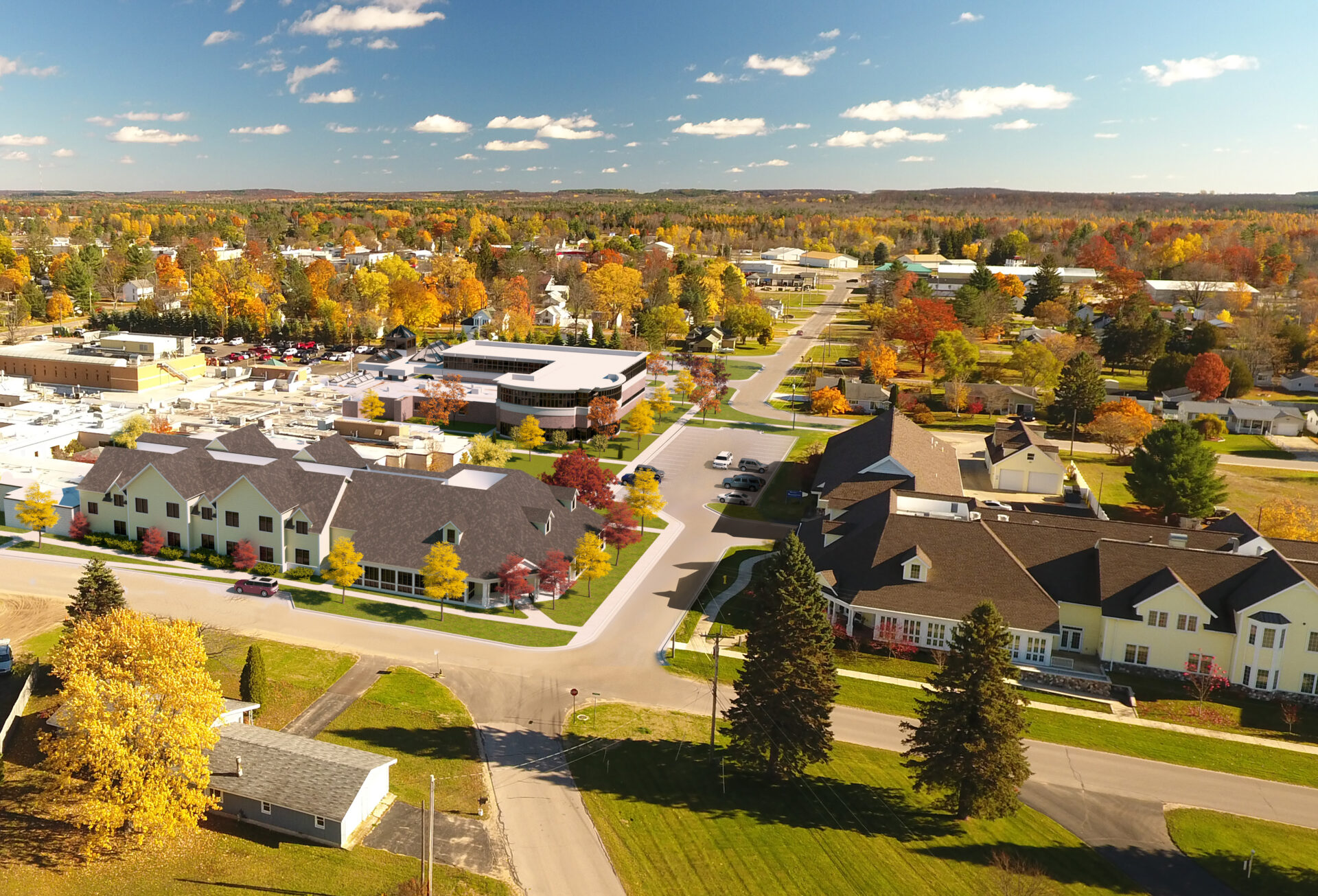Real estate renderings are transforming the way properties are marketed and sold, offering a compelling edge to developers, agents, and marketers. These highly detailed, photorealistic 3D visualizations provide potential buyers with a lifelike view of a property, even if it’s still under construction. From showcasing architectural appeal with exterior renderings to allowing buyers to visualize living spaces through interior renderings, these tools offer a comprehensive, immersive experience. This article will explore how real estate renderings can significantly enhance property sales, attract buyers, and increase overall marketability, illustrating why they have become an indispensable asset in today’s property market.
Understanding Real Estate Renderings
What Are 3D Visualizations?
3D visualizations are computer-generated images that represent architectural designs in a realistic and detailed manner. In real estate, they serve as a powerful tool to present properties in a visually engaging format. Unlike traditional 2D plans or sketches, 3D visualizations create an immersive experience that allows potential buyers to explore a property as if it were already built. These visualizations can include intricate details like textures, lighting, and furnishings, providing a comprehensive view of both interior and exterior spaces.
This level of detail helps convey the true potential of a property, making it easier for buyers to understand scale, layout, and design elements. By offering a realistic depiction, 3D visualizations bridge the gap between architects’ plans and buyers’ imaginations, enhancing the decision-making process and fostering greater interest in the property. As a result, they have become an essential component in modern real estate marketing strategies.
Types of Property Renderings
Property renderings come in various types, each serving a unique purpose in showcasing different aspects of a real estate project. Exterior renderings focus on the outer structure, displaying architectural style, landscaping, and street view, which helps buyers appreciate the property’s curb appeal. Interior renderings, on the other hand, provide a glimpse into the living spaces, complete with furniture, decor, and lighting, allowing potential buyers to envision themselves within the home. Aerial renderings offer a bird’s-eye view, useful for illustrating the property’s location and surroundings, highlighting nearby amenities and landscape features. Lastly, neighborhood renderings provide context by depicting the property within its community, showcasing local streets, parks, and facilities. Each type of rendering plays a vital role in creating a comprehensive narrative about the property, aiding buyers in making informed decisions. By offering these detailed visual insights, real estate professionals can effectively capture interest and facilitate quicker sales.
Importance in Property Market
In the competitive property market, real estate renderings have become indispensable for both sellers and buyers. These visual tools significantly enhance the marketability of listings by providing a realistic preview of properties under construction or renovation. For sellers, 3D renderings can shorten sales cycles by attracting more interest and facilitating quicker decisions from potential buyers. They help highlight the unique features and design elements of a property, boosting its perceived value. For buyers, renderings offer a clear understanding of a property’s scale, layout, and aesthetics, which traditional photos or blueprints fail to convey. This clarity helps reduce uncertainties, allowing buyers to make more confident purchasing decisions. Additionally, in a crowded marketplace, 3D renderings can make listings stand out, capturing attention through visually engaging presentations. By bridging the gap between concept and reality, real estate renderings empower all parties involved, ultimately driving sales and enhancing the overall property buying and selling experience.

Benefits for Buyers and Sellers
Enhancing Buyer Experience
3D renderings significantly enhance the buyer experience by providing an immersive and interactive view of the property. Unlike static images or blueprints, 3D visualizations allow potential buyers to explore a property in a more engaging way, offering a sense of walking through rooms and experiencing the space firsthand. This realistic depiction helps buyers understand the flow and functionality of a property, making it easier to envision themselves living there. The ability to see detailed elements such as room layouts, furniture placement, and lighting conditions bridges the gap between imagination and reality, reducing uncertainties and boosting buyer confidence. Moreover, renderings can be customized to showcase different design options or renovations, helping buyers tailor their vision according to personal preferences. By offering such a comprehensive view, 3D renderings not only captivate buyer interest but also facilitate a more informed decision-making process, ultimately leading to a smoother and more satisfying purchasing experience.
Accelerating Sales Process
3D renderings play a pivotal role in accelerating the sales process for real estate properties. By providing potential buyers with a detailed and realistic depiction of a property, these visualizations help eliminate ambiguity and speed up decision-making. Buyers can quickly assess whether a property meets their needs and preferences, reducing the time spent on lengthy deliberations. For sellers, this means a shorter time on the market and a higher likelihood of closing deals faster. Additionally, high-quality renderings can increase a property’s perceived value, often leading to quicker offers and negotiations. This visual clarity also minimizes the need for multiple site visits, as buyers can explore the property in depth remotely. Furthermore, by integrating these renderings into marketing materials, agents can attract a broader audience and generate more interest upfront. Ultimately, 3D renderings streamline the entire sales process, benefiting both buyers and sellers by facilitating efficient transactions.
Increasing Property Value
3D renderings have the potential to significantly increase a property’s perceived value. By showcasing a property in its best light, renderings highlight its unique features and potential, capturing the attention of buyers who may not have considered it otherwise. These visualizations can demonstrate the possibilities for customization, renovation, and design, enhancing the property’s appeal and encouraging buyers to envision higher-value modifications. For sellers, investing in high-quality 3D renderings can lead to a stronger market position by differentiating their listings from others. The ability to present a property with a polished, professional look can justify higher asking prices, as buyers are more likely to see the property as premium. Additionally, renderings that include future development plans can attract investors looking for projects with growth potential. In essence, 3D renderings not only bring properties to life but also create opportunities to enhance their market value, benefiting sellers financially.

Boosting Real Estate Marketing
Creating Emotional Appeal
3D renderings are instrumental in creating emotional appeal in real estate marketing. By providing potential buyers with vivid and lifelike visualizations, these renderings help forge a personal connection with the property. When buyers can visualize themselves living in a space, complete with personalized decor and furnishings, it evokes a sense of belonging and enhances their emotional investment. This emotional response can be a powerful motivator, turning interest into a genuine desire to purchase. Furthermore, renderings can be tailored to highlight elements that resonate with specific target demographics, such as family-friendly features or luxurious amenities. By tapping into the emotional aspects of homeownership—comfort, status, and belonging—3D visualizations help transform a property from just another listing into a dream home. This strategy not only makes properties more memorable but also increases the likelihood of engagement and offers, thus boosting the effectiveness of real estate marketing efforts.
Standing Out in the Market
In today’s competitive real estate landscape, standing out is essential. 3D renderings provide a distinct advantage by transforming property listings into visually compelling presentations. These renderings go beyond traditional photographs, offering stunning, lifelike images that capture the imagination of potential buyers. By showcasing a property’s unique features and architectural design in exquisite detail, renderings make listings more engaging and memorable. This visual impact not only attracts more attention but also distinguishes a property amidst a sea of listings. Moreover, when combined with virtual tours and interactive elements, 3D renderings can create a comprehensive digital experience that further elevates a property’s appeal. Real estate agents and developers can leverage these tools to craft a powerful narrative around a property, emphasizing its lifestyle benefits and potential. Ultimately, 3D renderings serve as a critical marketing asset, helping properties to stand out and capturing the interest of discerning buyers in a crowded market.
Integrating with Modern Technology
Integrating 3D renderings with modern technology elevates real estate marketing strategies to new heights. By combining renderings with virtual reality (VR) and augmented reality (AR), potential buyers can experience properties in an immersive and interactive manner. VR allows users to virtually walk through properties, gaining a realistic sense of space and layout without physically being present. AR, on the other hand, can overlay digital information onto the physical world, enabling buyers to see how a property might look with different design elements or furniture arrangements. Additionally, incorporating 3D renderings into interactive online platforms enhances user engagement, allowing prospective buyers to explore properties at their own pace. These technologies not only make the property viewing experience more convenient but also broaden the reach to a global audience. By embracing these modern tools, real estate professionals can provide a cutting-edge, engaging experience that stands out, ultimately boosting interest and facilitating faster sales.

0 Comments